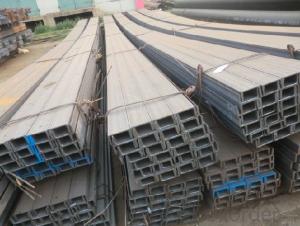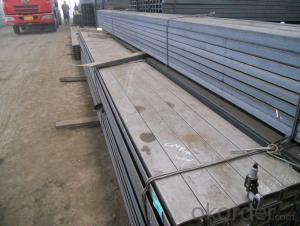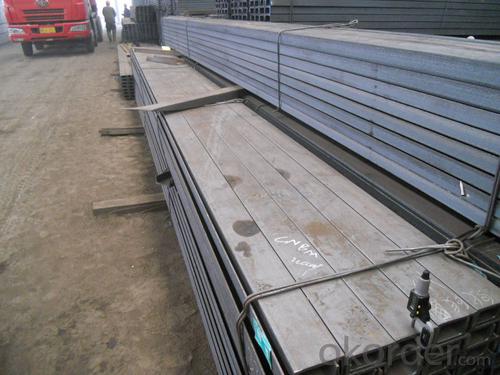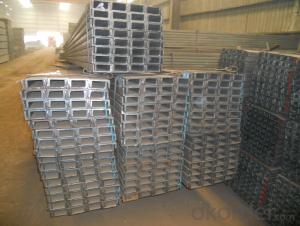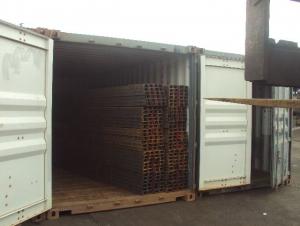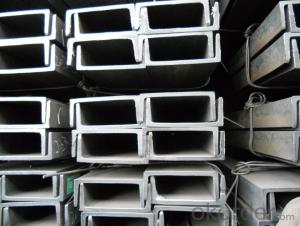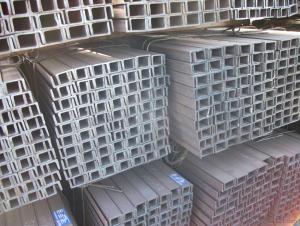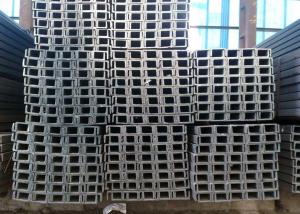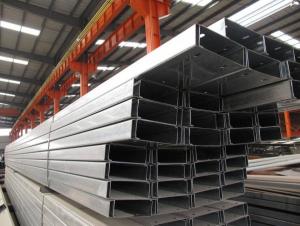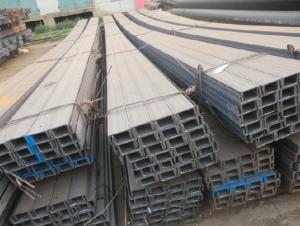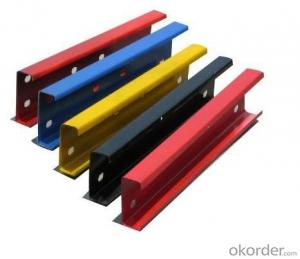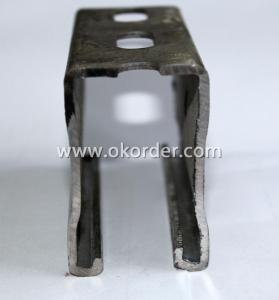Hot Rolled U-channel Carbon Steel JIS Standard
- Loading Port:
- Tianjin
- Payment Terms:
- TT or LC
- Min Order Qty:
- 25 m.t.
- Supply Capability:
- 1000 m.t./month
OKorder Service Pledge
OKorder Financial Service
You Might Also Like
Product Description:
OKorder is offering U-channel at great prices with worldwide shipping. Our supplier is a world-class manufacturer of steel, with our products utilized the world over. OKorder annually supplies products to European, North American and Asian markets. We provide quotations within 24 hours of receiving an inquiry and guarantee competitive prices.
Product Applications:
1.The JIS channel can be devided into two kinds, namely common channel steel and light channel steel. The sizes of hot rolled common channel steel range from 5# to 40#. Meanwhile, the channel steel can be divided into cold forming sectional equal channel steel, cold forming sectional unequal channel steel, cold forming inner edge channel steel and outer edge channel steel.
2.The JIS channel is usually used for arch-itechtural structure, and they could be welded in order to support or hang a vari-ety of facilities. They are also usually used in combination with I beam. The channel steel with sizes under 14# is usually applied to construction engineering, as purline, while the channel steel with sizes above 16# is more likely to be used in building vehicle chassis structure and mechanical structure. Furthermore, the channel steel in sizes above 30# are target at building bridge structure, as tension bar.
Product Advantages:
OKorder's U-channel are durable, strong, and resist corrosion.
Main Product Features:
· Premium quality
· Prompt delivery & seaworthy packing (30 days after receiving deposit)
· Corrosion resistance
· Can be recycled and reused
· Mill test certification
· Professional Service
· Competitive pricing
Product Specifications:
1. We are definitely speciallizing in manufacturing and supplying channel steel as per japanese standard, which is characterised with high mechanical strength and competitive prices.
2. The sections in details are as followings in the table-1
JIS CHANNEL | Standard h | Sectional b | Dimension s | t | Mass: Kg/m |
(mm) | (mm) | (mm) | (mm) | ||
50x25 | 50 | 25 | 3.0 | 6.00 | 2.37 |
75X40 | 75 | 40 | 3.8 | 7.00 | 5.30 |
75X40 | 75 | 40 | 4.0 | 7.00 | 5.60 |
75X40 | 75 | 40 | 4.5 | 7.00 | 5.85 |
75X40 | 75 | 40 | 5.0 | 7.00 | 6.92 |
100X50 | 100 | 50 | 3.8 | 6.00 | 7.30 |
100X50 | 100 | 50 | 4.2 | 6.00 | 8.03 |
100X50 | 100 | 50 | 4.5 | 7.50 | 8.97 |
100X50 | 100 | 50 | 5.0 | 7.50 | 9.36 |
125X65 | 125 | 65 | 5.2 | 6.80 | 11.66 |
125X65 | 125 | 65 | 5.3 | 6.80 | 12.17 |
125X65 | 125 | 65 | 5.5 | 8.00 | 12.91 |
125X65 | 125 | 65 | 6.0 | 8.00 | 13.40 |
150x75 | 150 | 75 | 5.5 | 7.30 | 14.66 |
150x75 | 150 | 75 | 5.7 | 10.00 | 16.71 |
150x75 | 150 | 75 | 6.0 | 10.00 | 17.90 |
150x75 | 150 | 75 | 6.5 | 10.00 | 18.60 |
150x75 | 150 | 75 | 6.5 | 10.00 | 24.00 |
200X80 | 200 | 80 | 7.5 | 11.00 | 24.60 |
Note of U-channel
1. According to national standard (GB) for our products, if not, supply according to national standards (GB) or agreement.
2. We can not only provide electric furnace +LF+VD and electros lag re-melting (ESR) steel forging materials, but also forging products of piece, bar, etc.
3. Our company is equipped with roll equipment and can provide our customers with roll billets or finished.
4. The materials that we purchase are all accord with International General Standard; you could check it out on the Material Quality Sheet.
5. We are the creator of the “seven-step inspect method” in China.
FAQ:
Q1: How soon can we receive the product after purchase?
A1: Within three days of placing an order, we will begin production. The specific shipping date is dependent upon international and government factors, but is typically 7 to 10 workdays.
Q2: What makes stainless steel stainless?
A2: Stainless steel must contain at least 10.5 % chromium. It is this element that reacts with the oxygen in the air to form a complex chrome-oxide surface layer that is invisible but strong enough to prevent further oxygen from "staining" (rusting) the surface. Higher levels of chromium and the addition of other alloying elements such as nickel and molybdenum enhance this surface layer and improve the corrosion resistance of the stainless material.
Q3: How soon can we receive the product after purchase?
A3: Within three days of placing an order, we will begin production. The specific shipping date is dependent
Images:
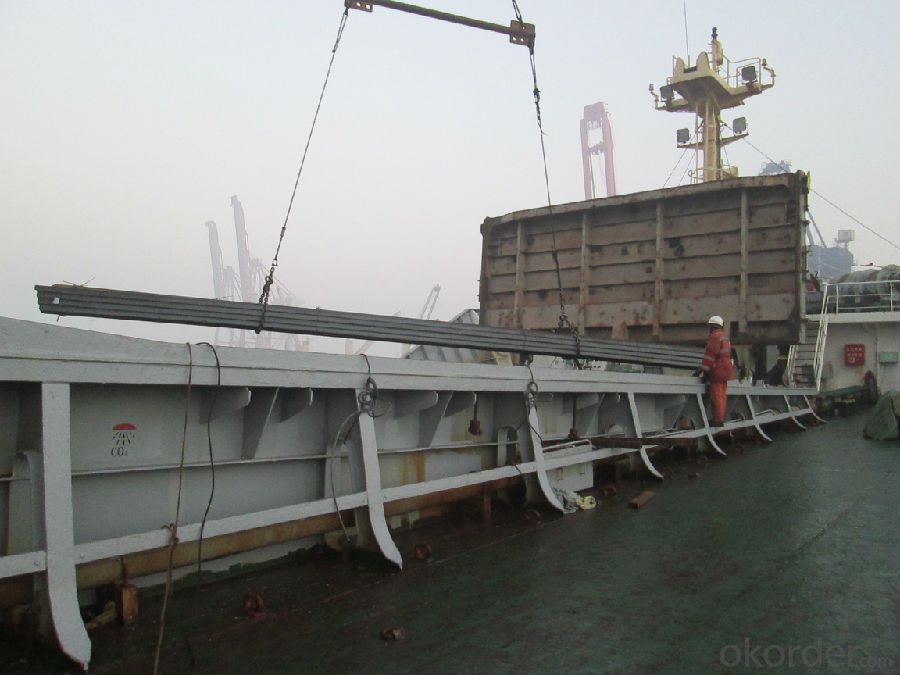
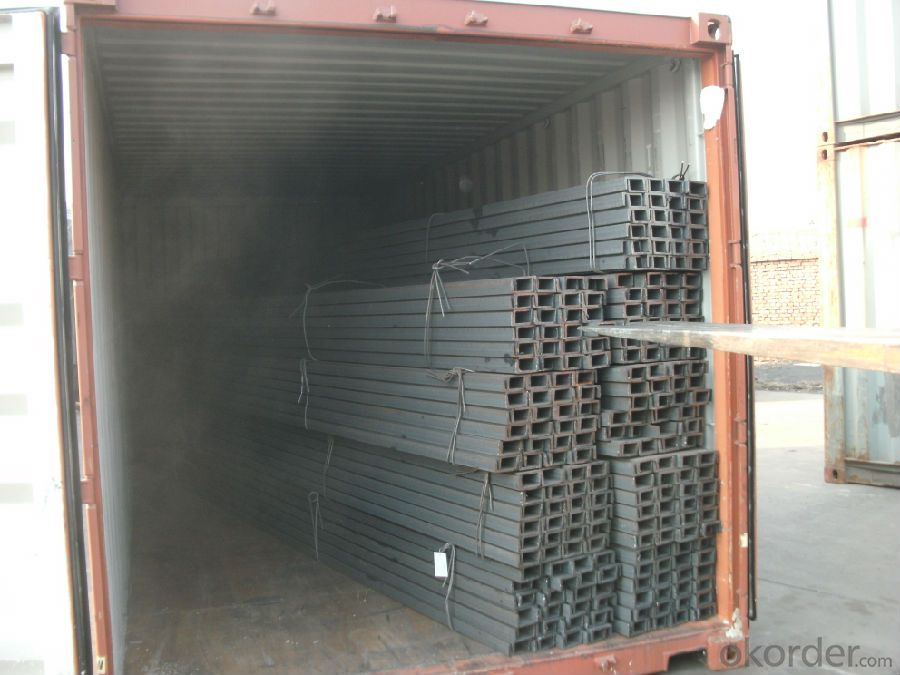
- Q: Can steel channels be used in outdoor environments?
- Yes, steel channels can be used in outdoor environments. Steel is a durable and weather-resistant material, making it suitable for various outdoor applications such as construction, infrastructure, and outdoor structures. It can withstand harsh weather conditions, including rain, snow, and extreme temperatures, without rusting or deteriorating easily. Additionally, steel channels can be galvanized or coated with protective coatings to enhance their resistance to corrosion and extend their lifespan in outdoor environments.
- Q: After the type of channel is not marked A or B, which shall be calculated?
- For safety reasons, according to the A calculation, the weight of the material can be calculated according to B to avoid the insufficient use time
- Q: What are the guidelines for steel channel installations in corrosive environments?
- To ensure the steel channels installed in corrosive environments remain durable and long-lasting, it is crucial to adhere to specific guidelines. Consider the following recommendations: 1. Material Selection: Opt for steel channel materials specifically designed for corrosive environments, such as stainless steel or galvanized steel. These materials are known for their corrosion resistance. 2. Protective Coatings: Apply suitable protective coatings to the steel channels to prevent corrosion. Options include anti-corrosion paints, epoxy coatings, or zinc-rich coatings. The coating should act as a barrier between the steel and the corrosive environment. 3. Adequate Ventilation: Proper airflow and ventilation are essential in corrosive environments to minimize the accumulation of corrosive gases or chemicals. Ensure the installation allows for sufficient ventilation to prevent the buildup of corrosive elements. 4. Regular Maintenance: Regularly inspect and maintain the steel channel installation to detect any signs of corrosion or damage. Promptly address any issues by cleaning, repairing, or replacing affected sections to prevent further corrosion. 5. Avoid Contact with Dissimilar Metals: Prevent direct contact between the steel channel and dissimilar metals to avoid galvanic corrosion. If different metals must be in close proximity, use insulating materials or appropriate coatings to separate them. 6. Drainage: Design the installation to facilitate effective drainage of any liquid or moisture that may come into contact with the steel channel. Standing water or moisture can accelerate corrosion, so ensure proper drainage. 7. Professional Consultation: Seek advice from professionals or corrosion engineers experienced in dealing with corrosive environments. They can provide specific guidance based on the unique conditions of the environment and recommend suitable measures to protect the steel channel. By adhering to these guidelines, the risk of corrosion in steel channel installations in corrosive environments can be minimized, ensuring their long-term performance and structural integrity.
- Q: What are the typical applications of steel channels?
- Steel channels are widely utilized in a variety of industries, thanks to their strong structure and versatility. They have numerous applications, including: 1. Construction: Steel channels are commonly employed in construction projects for framing, support beams, and bracing. They offer structural stability and can bear heavy loads, making them ideal for constructing buildings, bridges, and other infrastructure. 2. Manufacturing: The manufacturing industry frequently uses steel channels to create industrial equipment, machinery, and conveyors. They can be easily welded or bolted together to form robust frames or support structures. 3. Electrical and Telecommunications: In the electrical and telecommunications sector, steel channels are often used for cable management and support. They serve as reliable raceways for electrical wires, conduits, and communication cables, ensuring secure and organized installations. 4. Automotive Industry: Steel channels play a crucial role in the automotive industry, where they are used to manufacture car frames, chassis, and suspension systems. Their high strength and durability contribute to the structural integrity and overall safety of vehicles. 5. Furniture and Shelving: Steel channels are commonly incorporated into the production of furniture and shelving units. They are utilized to construct frames, supports, and brackets for various types of furniture, such as desks, tables, and storage racks. 6. Solar Panel Mounting: Solar panel mounting systems often make use of steel channels. They provide a durable and stable support structure for the panels, ensuring they remain securely positioned and capable of withstanding various weather conditions. 7. Marine and Offshore: Steel channels are extensively utilized in marine and offshore applications due to their corrosion resistance and strength. They are employed in shipbuilding, offshore platforms, and marine structures where durability and reliability are of utmost importance. 8. Agricultural Equipment: Steel channels are also applied in the agricultural sector to build machinery and equipment such as tractors, plows, and harvesters. They provide the necessary strength and rigidity to withstand the demanding conditions of agricultural operations. In conclusion, steel channels are an indispensable component in numerous industries that require strength, durability, and versatility. Their applications range from construction and manufacturing to electrical installations, automotive manufacturing, furniture production, and more.
- Q: What is a steel channel?
- A steel channel is a type of structural steel shape that resembles a "C" or "U" shape, with two flanges and a web connecting them. It is commonly used in construction and engineering projects to provide support and stability in various applications such as framing, bracing, and reinforcing structures.
- Q: What are the different welding techniques used for steel channels?
- Steel channels can be welded using different techniques, each with its own advantages and considerations. One commonly used technique is Shielded Metal Arc Welding (SMAW), also known as stick welding. SMAW involves using a consumable electrode coated in flux to create a shield around the weld pool and protect it from atmospheric contamination. This versatile technique can be used in various positions and is suitable for welding steel channels of different sizes and thicknesses. Another popular technique is Gas Metal Arc Welding (GMAW), also known as MIG (Metal Inert Gas) welding. GMAW uses a wire electrode that feeds through a welding gun, along with a shielding gas like argon or a mixture of argon and carbon dioxide. It offers high welding speeds and allows for continuous welding, making it efficient for welding long steel channels. Flux-Cored Arc Welding (FCAW) is similar to GMAW but uses a tubular flux-cored wire instead of a solid wire electrode. This wire contains a flux material that provides shielding gas and creates a slag to protect the weld pool. FCAW is often preferred for outdoor applications or when welds may be exposed to wind or drafts. Submerged Arc Welding (SAW) involves using a continuously fed electrode and a granular flux that covers the weld pool entirely. The arc is submerged under the flux during SAW. This technique is commonly used for welding thick steel channels or when high deposition rates are required. It provides excellent penetration and produces high-quality welds with minimal spatter. Tungsten Inert Gas Welding (TIG), also known as Gas Tungsten Arc Welding (GTAW), is a precise technique that uses a non-consumable tungsten electrode and a shielding gas like argon. TIG welding is often used for welding thin steel channels or when aesthetic appeal is important, as it allows for excellent control over the heat input and produces precise and clean welds. It's important to consider factors such as channel thickness, desired weld quality, available equipment, and specific application requirements when choosing a welding technique for steel channels.
- Q: What are the different methods of anti-slip treatment for steel channels?
- Some common methods of anti-slip treatment for steel channels include applying non-slip coatings or paints, using abrasive strips or tapes, welding on anti-slip gratings or plates, or using adhesive-backed anti-slip products.
- Q: What are the different methods for transporting and handling steel channels?
- There are several different methods for transporting and handling steel channels, depending on the specific requirements and logistics of the situation. Some of the commonly used methods include: 1. Crane lifting: Steel channels can be transported and lifted using cranes equipped with hooks or lifting magnets. This method is ideal for large-scale projects or when handling heavy steel channels. 2. Forklifts: Forklifts with specialized attachments can be used to transport steel channels within a facility or construction site. This method is suitable for smaller and lighter steel channels, allowing for more precise movement and placement. 3. Conveyor systems: In manufacturing settings, conveyor systems can be implemented to transport steel channels from one process to another. This method is efficient and reduces the need for manual handling. 4. Flatbed trucks: Steel channels can be loaded onto flatbed trucks for transportation over long distances. The channels are secured using straps or chains to prevent movement during transit. 5. Palletizing: Steel channels can be stacked and secured on pallets for easier handling and transportation. This method is common when shipping smaller quantities of steel channels or for storing them in a warehouse. 6. Rollers or skids: Steel channels can be moved along rollers or skids for short distances within a facility or construction site. This method allows for easy movement and positioning of the channels. 7. Rail transportation: For larger quantities or longer distances, steel channels can be transported via rail. Specialized rail cars or containers are used to safely secure and transport the channels. It is important to consider the size, weight, and fragility of the steel channels when determining the appropriate method for transporting and handling them. Safety measures should always be followed to prevent accidents, and specific equipment may be needed depending on the chosen method.
- Q: What are the different types of connections used with steel channels?
- There are several types of connections that can be used with steel channels, depending on the specific application and structural requirements. Some of the commonly used connections include: 1. Welded connections: Welding is a popular method for connecting steel channels. It involves joining the channels by melting the adjacent edges and allowing them to solidify, creating a strong and durable connection. Welded connections can be full penetration, where the entire thickness of the channel is welded, or partial penetration, where only a portion of the thickness is welded. 2. Bolted connections: Bolted connections involve using bolts and nuts to connect steel channels. Holes are drilled in the channels, and bolts are inserted through these holes, with nuts tightened to hold the channels together. Bolted connections offer flexibility and ease of assembly and disassembly, making them suitable for situations where frequent maintenance or modifications are required. 3. Mechanical connections: Mechanical connections utilize specialized connectors, such as couplings, brackets, or plates, to join steel channels. These connectors are designed to provide a secure and reliable connection without the need for welding or bolting. Mechanical connections are often used in applications where quick installation or alignment adjustments are necessary. 4. Riveted connections: Riveting involves using rivets, which are metal pins with a formed head on one end, to connect steel channels. The rivets are inserted through pre-drilled holes in the channels and then hammered or riveted into place, securing the connection. Riveted connections were widely used in the past but have become less common due to the availability of more efficient connection methods. 5. Adhesive connections: Adhesive connections involve using high-strength adhesives to bond steel channels together. The adhesive is applied to the contact surfaces of the channels, and pressure is applied to ensure a strong bond. Adhesive connections are useful in situations where welding or bolting is not feasible, such as joining dissimilar metals or materials with high thermal expansion coefficients. Each type of connection has its advantages and limitations, and the choice depends on factors such as load requirements, design considerations, and project specifications. It is essential to consult with a structural engineer or professional fabricator to determine the most appropriate type of connection for a given steel channel application.
- Q: What does "channel 160*60*20*2.5" mean in steel roof trusses? What is the specific weight?
- Steel structure is mainly made of steel material, and it is one of the main types of building structure. The structure is mainly composed of steel beams and steel plates, such as steel beams, steel columns, steel trusses and so on. Each component or component is usually connected with welds, bolts or rivets. Because of its light weight and simple construction, it is widely used in large factories, stadiums, super high-rise and other fields.
Send your message to us
Hot Rolled U-channel Carbon Steel JIS Standard
- Loading Port:
- Tianjin
- Payment Terms:
- TT or LC
- Min Order Qty:
- 25 m.t.
- Supply Capability:
- 1000 m.t./month
OKorder Service Pledge
OKorder Financial Service
Similar products
Hot products
Hot Searches
Related keywords
